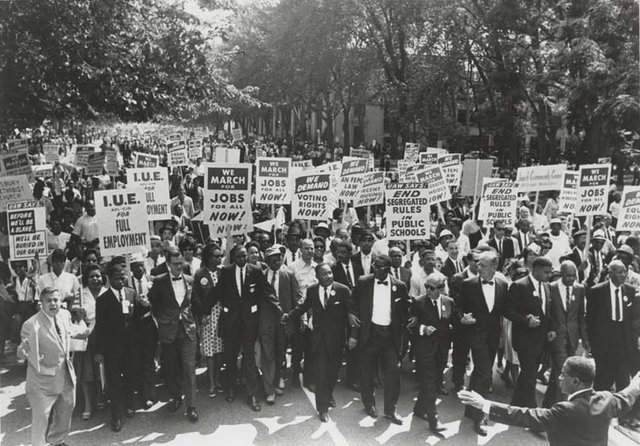California Academy Civil Rights Movement Paper
California Academy Civil Rights Movement Paper
1954 Supreme Court decision, Brown v Board of Education of Topeka, Kansas
The 1954 Supreme Court decision, Brown v Board of Education of Topeka, Kansas was an important case regarding civil rights for African Americans. All nine justices of the Supreme Court ruled that segregation in public schools was unconstitutional.
We come then to the question presented. Does segregation of children, in public schools, solely on the basis of race, even though the facilities and other factors may be equal, deprive the children of equal educational opportunities? We believe it does.
…We conclude that in the field of public education the doctrine of “separate but equal” has no place. Separate educational facilities are inherently unequal. Therefore, we hold that the plaintiffs are, because of segregation, being deprived of the equal protection of the laws guaranteed by the Fourteenth Amendment.
Question 1 (3 points)
What was the name of this Supreme Court Case?
Question 2 (3 points)
What did the court mean by “separate but equal” in the decision? (2-3 Sentences)
Question 3 (3 points)
What was the conclusion that the Supreme Court came to in this decision? (2-3 Sentences)
Primary Source #2
The March on Washington
This photograph shows some of the 250,000 Americans who gathered for the March on Washington in August 1963.

Question 4 (3 points)
Who was the leader of this protest?
Question 5 (3 points)
What are the people in this photo doing? (2-3 Sentences)
Question 6 (3 points)
Why was the March on Washington an important accomplishment for the Civil Rights Movement? (2-3 Sentences)
Question 7 (3 points)
Based on the photograph state one goal of the March on Washington in August 1963? (2-3 Sentences)
Primary Source #3
“A Statement to the South and Nation,” by the NSLC
But far beyond this, we call upon them [African Americans] to accept Christian Love
in full knowledge of its power to defy evil. We call upon them to understand that non-violence is not a symbol of weakness or cowardice, but as Jesus demonstrated, non-violent resistance transforms [changes] weakness into strength and breeds courage in face of danger.
We urge them, no matter how great the provocation [aggravation] to dedicate themselves to this motto:
“Not one hair of one head of one white person shall be harmed.”
We advocate [support] non-violence in words, thought and deed, we believe this spirit and this spirit alone can overcome the decades of mutual fear and suspicion that have infested and poisoned our Southern culture. . . .
Question 8 (3 points)
According to this document what method was recommended to help African Americans achieve equality? (2-3 Sentences)
Question 9 (3 points)
What are two examples of a non-violent form of protest? (2-3 Sentences)
Question 10 (3 points)
Do you agree this was the best method to use? Why or Why not? (2-3 Sentences)


